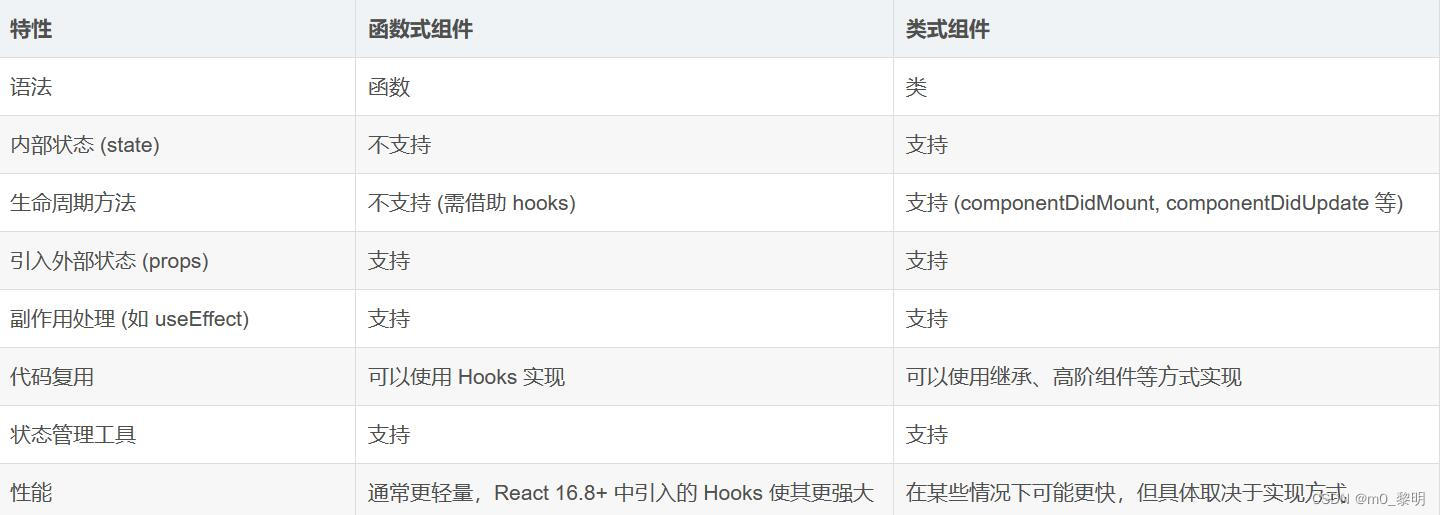React 中的类组件和函数组件是两种不同的组件编写方式,它们之间有一些区别。
语法和写法:类组件是使用类的语法进行定义的,它继承自 React.Component 类,并且需要实现 render() 方法来返回组件的 JSX。函数组件是使用函数的语法进行定义的,它接收一个 props 对象作为参数,并返回组件的 JSX。
示例:类组件
class MyComponent extends React.Component {render() {return <div>Hello, {this.props.name}</div>;}
}示例:函数组件
function MyComponent(props) {return <div>Hello, {props.name}</div>;
}状态管理:在类组件中,可以使用 state 属性来存储和管理组件的内部状态。state 是一个可变的对象,当状态发生变化时,组件会重新渲染。函数组件在 React 16.8 引入的 Hooks 特性后,也可以使用 useState Hook 来管理组件的状态。 示例:类组件中的状态管理
class Counter extends React.Component {constructor(props) {super(props);this.state = { count: 0 };}increment() {this.setState({ count: this.state.count + 1 });}render() {return (<div>Count: {this.state.count}<button onClick={() => this.increment()}>Increment</button></div>);}
}示例:函数组件中的状态管理(使用 useState Hook)
function Counter() {const [count, setCount] = React.useState(0);const increment = () => {setCount(count + 1);};return (<div>Count: {count}<button onClick={increment}>Increment</button></div>);
}示例:函数组件中的生命周期模拟(使用 useEffect Hook)
function MyComponent(props) {React.useEffect(() => {console.log('Component mounted');return () => {console.log('Component will unmount');};}, []);React.useEffect(() => {console.log('Component updated');});return <div>Hello, {props.name}</div>;
}总的来说,类组件和函数组件都可以实现相同的功能,但随着 React 的发展,函数组件在代码简洁性、可测试性和性能方面具有一些优势,并且在使用 Hooks 后,函数组件可以更方便地处理状态和副作用。因此,函数组件逐渐成为 React 中的主要编写方式。





)
)


-hive压缩)

我的基础教程(三)(我的菜鸟教程笔记)-控件对象与窗体容器集合(Control)的探究与学习)

)



)


